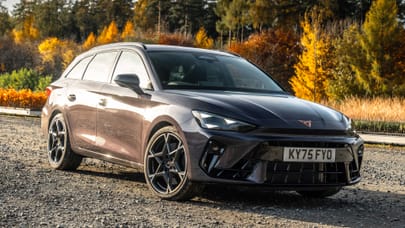
Mythbuster: is MPG a measure of consumption?
A common misconception, set straight right here
Myth: MPG is a measure of consumption
Miles per gallon isn't a measure of fuel consumption but of economy. A higher number means lower quantities of fuel used. Which is higher economy. This upside down way of looking at things inhibits our ability to understand how we use fuel and even how we might save it.
For example, do you know how much extra fuel a roofrack uses? Or aircon, or underinflated tyres? No, because you can’t just add their fuel to the car’s baseline when you work in economy, but you can if you work in consumption.
I always wondered about bikes on top of a car. An Australian website has carefully researched it, using the metric measure of consumption rather than of economy. Two bikes on a rack cost 1.4l/100km at a steady 62mph. That is easily accessible useful information. On say a 1,000-mile return trip London to Scotland (1,600km), it’d be 22 litres extra. That’s £33 over and above the unfettered car’s fuel bill.
But try to work that out using a measure of economy – mpg – and it’s complicated, because 1.4l/100km is 201mpg and what do you do with that? You’ll get all knotted up in reciprocals. And life isn’t a maths lesson.
This change in measurement units would make cost per mile far easier to figure out too. Imagine your satnav suggests a detour to avoid traffic? Even if you know your car’s economy in mpg, it properly messes with your head to try and work out how much extra fuel you’d use on, say, a route 20 miles longer. Whereas if you knew your consumption in litres per mile you’d just multiply that by 20 and you’d have the extra litres, and hence extra cost.
Even choosing a car would be easy because the higher the fuel consumption number, the higher the monthly fuel bill in direct proportion.
Come to think of it maybe I shouldn’t suggest using litres per mile as the measure. Because it’d always be tiny and hard to picture. A 35mpg car would drink 0.13 litres per mile. Ungainly. Let’s talk instead of litres per 100 miles, in this case 13. That’s why in fully metric countries they don’t use l/km but l/100km.
You’ll notice I’m not suggesting going fully metric and switching to km as the distance unit. UK drivers always think of distances in miles. Oh, unless they’re urban drivers who think of distances in minutes, but that’s another story.
Top Gear
Newsletter
Thank you for subscribing to our newsletter. Look out for your regular round-up of news, reviews and offers in your inbox.
Get all the latest news, reviews and exclusives, direct to your inbox.
Trending this week
- Car Review
BMW 1 Series








